
Deneb and Environs
(Trying to capture the nebulosity around the bright star Deneb with a Canon EOS 1Ds)
Deneb is the northern apex of the prominent "Summer Triangle" asterism, having Vega and Altair as the other corners of the triangle. What makes this region attractive is that it contains the Milky Way, with its awesome star-fields, and also a lot of H-Alpha (very deep red) nebulosity. I was hoping to capture some of that richness in a wide field image. Turned out rather challenging. Why? Primarily because the Canon Digital SLR cameras are very accurate in reproducing the colours that the human eye would see (if the view were bright enough) and are therefore quite insensitive to the very deep red H-Alpha. H-Alpha has a wavelength of 6563 Angstroms, bordering on Infra Red, and the eye is only about 8% as sensitive to H-Alpha as it is to green light. The Canon DSLR cameras seem to have even weaker response, at under 4% (graph below reproduced from this very interesting French webpage):

It's not because the sensors are insensitive; it's because Canon, in trying to replicate photopic response (human eye response in bright light), has been forced to install colored filters with cutoffs that filter out both Infra Red and a part of the deep red that is of great interest to amateur astro-imagers. Had Canon included H-Alpha at a brighter level, the beautiful daylight colour rendition of their DSLRs might well have been messed up. Interestingly there are several photographic films that have quite high sensitivities to deep red and are often used to capture this kind nebulosity in a very pretty fashion. Similarly the RGB filters used in imaging with astro CCDs pass through a lot of this deep red (and therefore are probably less able to render colours-as-the-eye-would-see in daylight photos) but are certainly very capable of pretty H-Alpha astro images. You can read more on the photopic (and scotopic, or very dim light) spectral response of the human eye here.
I set up the Canon 1Ds with a 100mm/f2.8 macro USM lens to take 20 images, one after another (exposure 110 seconds each, camera piggyback mounted on a Celestron Ultima 2000-8" SCT, ISO 1250, lens opened to f2.8). Out of the 20 frames I ended up with 5 that had excellent tracking, another handful so-so, and the rest useless because of obvious trailing, a 25% yield. Here is a typical 110-second frame, processed using Daylight White Balance:
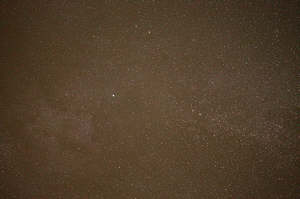
Not very exciting, is it? The bright star in the middle is indeed Deneb and one can just about make out the North American Nebula below it and to its left. Looks like there's a lot of light pollution, yet this was taken at a dark site, Sharaf al Alamayn, 2000m high up in the mountains and the nearest village tens of km away. The North American Nebula normally photographs as a deep red (H-Alpha) on films. Obviously some further digital manipulation is called for. So I aligned and stacked my 5 good frames and devignetted the result to get rid of most of the light fall-off towards the corners to obtain this:

Next we need to get rid of the sky glow/light pollution. I picked a colour sample from where I expected the image to be pretty dark, subtracted that colour, and obtained this:
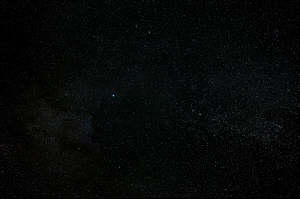
Er...? Rather dark! OK now all we have to do is some contrast stretching and colour-curves manipulation. Actually this turned out to be a huge challenge. How to get that red nebulosity to show nicely without going very far from Daylight White Balance or ending up with all stars red. Of course, "nice" is a prejudice acquired from the very red renditions obtained in the olden days with film. One can end up with various renditions, of course:
Daylight
White Balance (Photopic Version?) =>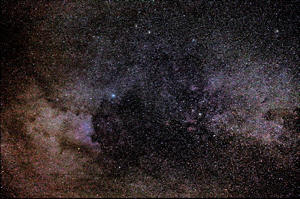
R, G, B,
files contrast-stretched individually =>
RGB Curves
manipulated aggressively =>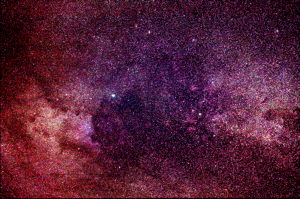
And here's the final version with Green curtailed significantly. Prints very well at 12x18". Well, it is an 11 megapixel photo:

Below is a sky map of the region:
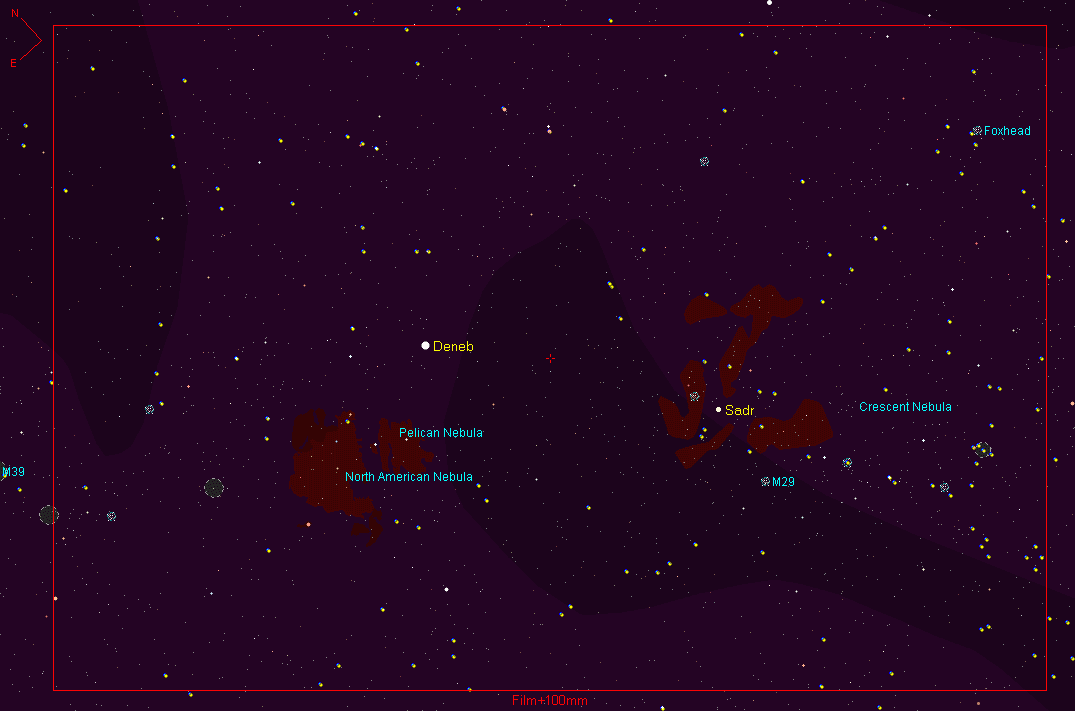
A few observations. That Pelican Nebula sure is faint! But at least some wisps of the Crescent may be perceived. I tried to preserve star colours by using a mask, separating the (bright) stars from the rest, thereby enabling a very severe contrast stretch on the nebulosity without taking most of the stars to a washed-out white saturation. The severe contrast stretch also amplifies any noise enormously, showing rather obviously at 1:1. Recall how dark was that earlier frame which had the sky glow/light pollution subtracted? All the images shown are simply stretched versions of that.
I continue to be impressed by how sharp the Canon 100mm macro lens is at infinity, at f2.8.
Here is a 1:1
crop of the North American region =>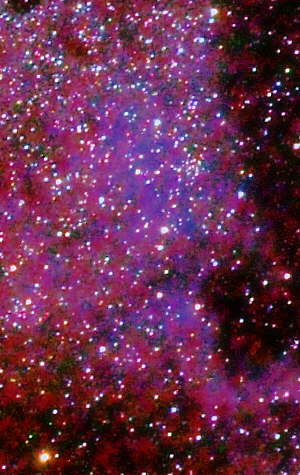
and the
absolute top-right corner of the frame =>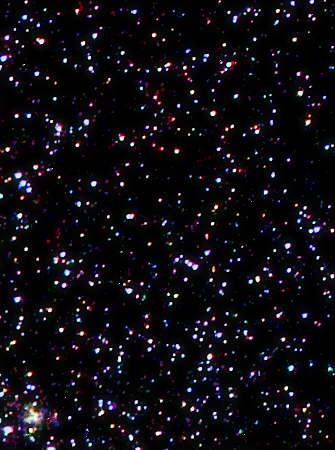
Noted the bright Foxhead open cluster at the bottom left of the above crop? Supposedly made up of stars having Magnitudes 11 to 15 (overall Magnitude 7.3), annotated on the sky map. Stars are pretty much pinpoints right into the very corner. No gull-wing comas despite the extreme contrast stretch. Wish all my lenses were like that ;-) Oh, and I had focused the lens using the infinity index mark. So much for science.
For other stuff, astro and normal photography, click Samir's Home.